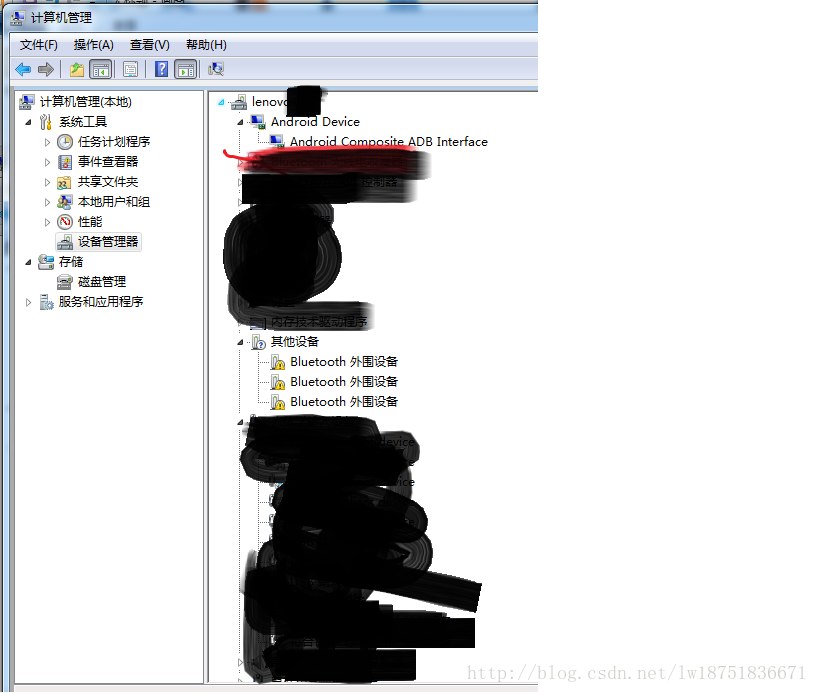LRU:Least Recently Used最近最少使用,当缓存容量不足时,先淘汰最近最少使用的数据。就像JVM垃圾回收一样,希望将存活的对象移动到内存的一端,然后清除其余空间。
缓存基本操作就是读、写、淘汰删除。
读操作时间复杂度为O(1)的那就是hash操作了,可以使用HashMap索引 key。
写操作时间复杂度为O(1),使用链表结构,在链表的一端插入节点,是可以完成O(1)操作,但是为了配合读,还要再次将节点放入HashMap中,put操作最优是O(1),最差是O(n)。
不少童鞋就有疑问了,写入时又使用map进行了put操作,为何缓存不直接使用map?没错,首先使用map存储了节点数据就是采用空间换时间,但是淘汰删除不好处理,使用map如何去记录最近最少使用(涉及到时间、频次问题)。so,使用链表可以将活跃节点移动到链表的一端,淘汰时直接从另一端进行删除。
?
|
1
2
3
4
5
6
7
8
9
10
11
12
13
14
15
16
17
18
19
20
21
22
23
24
25
26
27
28
29
30
31
32
33
34
35
36
37
38
39
40
41
42
43
44
45
46
47
48
49
50
51
52
53
54
55
56
57
58
59
60
61
62
63
64
65
66
67
68
69
70
71
72
73
74
75
76
77
78
79
80
81
82
83
84
85
86
87
88
89
90
91
92
93
94
95
96
97
98
99
100
|
public class LruCache<K,V> {
/** 这里简单点直接初始化了*/
private int capacity = 2;
private int size = 0;
private HashMap<K,DoubleListNode<K,V>> cache = new HashMap<>(capacity);
private DoubleListNode<K,V> lruNode = new DoubleListNode<K, V>(null,null,null,null);
private DoubleListNode<K,V> mruNode = new DoubleListNode<K, V>(null,null,null,null);
public V get(K key){
DoubleListNode<K,V> target = cache.get(key);
if (target == null) {
return null;
}
/** 使用过就移动到右侧 */
move2mru(target);
return target.value;
}
public void put(K key,V value){
if(cache.containsKey(key)){
DoubleListNode<K,V> temp = cache.get(key);
temp.value = value;
/** 使用过就移动到右侧 */
move2mru(temp);
return;
}
/** 容量满了清除左侧 */
if(size >= capacity){
evict4lru();
}
DoubleListNode<K,V> newNode = new DoubleListNode<>(mruNode,null,key,value);
if(size == 0){
lruNode.next = newNode;
}
mruNode.next = newNode;
mruNode = newNode;
cache.put(key,newNode);
size++;
}
private void move2mru(DoubleListNode<K,V> newMru){
DoubleListNode<K,V> pre = newMru.pre;
DoubleListNode<K,V> next = newMru.next;
pre.next = next;
newMru.pre = mruNode;
mruNode.next = newMru;
mruNode = newMru;
}
private void evict4lru(){
cache.remove(lruNode.next.key);
lruNode.next = lruNode.next.next;
size--;
}
public String toString(){
StringBuffer sb = new StringBuffer("lru -> ");
DoubleListNode<K,V> temp = lruNode;
while(temp!=null){
sb.append(temp.key).append(":").append(temp.value);
sb.append(" -> ");
temp = temp.next;
}
sb.append(" -> mru ");
return sb.toString();
}
public static void main(String[] args) {
LruCache<String,String> cache = new LruCache<>();
cache.put("1","1");
System.out.println(cache);
cache.get("1");
cache.put("2","2");
System.out.println(cache);
cache.put("3","3");
System.out.println(cache);
cache.put("4","4");
System.out.println(cache);
}
}
class DoubleListNode<K,V>{
K key;
V value;
DoubleListNode<K,V> pre;
DoubleListNode<K,V> next;
public DoubleListNode(K key,V value){
this.key = key;
this.value = value;
}
public DoubleListNode(DoubleListNode<K,V> pre,DoubleListNode<K,V> next,K key,V value){
this.pre = pre;
this.next = next;
this.key = key;
this.value = value;
}
}
|
这里使用链表,及HashMap完成了基于LRU的缓存,其中HashMap主要用来快速索引key,链表用来完成LRU机制。当然尚有许多不足,包括缓存移除remove,缓存ttl,线程安全等。
到此这篇关于浅谈Java如何实现一个基于LRU时间复杂度为O(1)的缓存的文章就介绍到这了,更多相关Java基于LRU时间复杂度为O(1)的缓存内容请搜索快网idc以前的文章或继续浏览下面的相关文章希望大家以后多多支持快网idc!
原文链接:https://blog.csdn.net/weixin_43275277/article/details/107740004
相关文章
猜你喜欢
- ASP.NET本地开发时常见的配置错误及解决方法? 2025-06-10
- ASP.NET自助建站系统的数据库备份与恢复操作指南 2025-06-10
- 个人网站服务器域名解析设置指南:从购买到绑定全流程 2025-06-10
- 个人网站搭建:如何挑选具有弹性扩展能力的服务器? 2025-06-10
- 个人服务器网站搭建:如何选择适合自己的建站程序或框架? 2025-06-10
TA的动态
- 2025-07-10 怎样使用阿里云的安全工具进行服务器漏洞扫描和修复?
- 2025-07-10 怎样使用命令行工具优化Linux云服务器的Ping性能?
- 2025-07-10 怎样使用Xshell连接华为云服务器,实现高效远程管理?
- 2025-07-10 怎样利用云服务器D盘搭建稳定、高效的网站托管环境?
- 2025-07-10 怎样使用阿里云的安全组功能来增强服务器防火墙的安全性?
快网idc优惠网
QQ交流群
您的支持,是我们最大的动力!
热门文章
-
2025-05-29 29
-
2025-05-25 105
-
2025-05-26 72
-
2025-05-29 42
-
2025-05-27 48
热门评论










